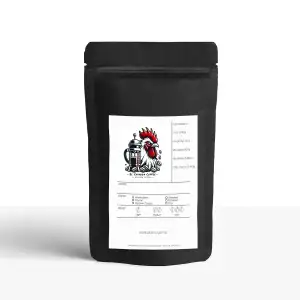Stay Safe and Compliant: Understanding OSHA Bloodborne Pathogens Certification for Tattoo and Piercing Studios
In the dynamic world of tattoo and piercing studios, ensuring the safety and well-being of both artists and clients is paramount. One of the critical aspects of maintaining a safe environment is understanding and adhering to the Occupational Safety and Health Administration’s (OSHA) Bloodborne Pathogens Certification. This certification, outlined in OSHA 29 CFR 1910.1030, is essential for tattoo and piercing professionals, as it equips them with the knowledge to protect themselves and their clients from potential exposure to harmful pathogens. Through comprehensive training on bloodborne pathogens, artists not only learn to identify and mitigate risks but also gain confidence in implementing effective safety measures. As we delve deeper into this topic, we will explore the key elements of bloodborne pathogens training online and how obtaining bloodborne pathogens certification for tattoo artists can foster a secure and hygienic studio environment.

Understanding Bloodborne Pathogens
What Are Bloodborne Pathogens?
Bloodborne pathogens are infectious microorganisms present in human blood that can cause diseases in humans. These include, but are not limited to, viruses such as hepatitis B (HBV), hepatitis C (HCV), and human immunodeficiency virus (HIV). In tattoo and piercing studios, the risk of exposure to these pathogens increases due to the nature of the work, which often involves procedures that can lead to contact with blood. Understanding what bloodborne pathogens are, and recognizing the potential health risks associated with them, is crucial for artists in this industry. Proper training on bloodborne pathogens helps professionals identify symptoms of infections and take preventive measures. This knowledge is fundamental in reducing the likelihood of pathogen transmission, thereby fostering a safer environment for both artists and clients. Adequate precautions and hygiene practices are vital in mitigating these risks.
Identifying Symptoms and Risks
Recognizing the symptoms and risks associated with bloodborne pathogens is a critical component of maintaining a safe studio environment. Symptoms of infections from pathogens like HBV, HCV, and HIV can vary, but they often include fatigue, fever, abdominal pain, and jaundice. Early identification of these symptoms can prevent the escalation of the disease and reduce the risk of spreading the infection to others. In the context of tattoo and piercing studios, the risk of exposure arises when there is direct contact with contaminated blood or bodily fluids. This can occur through needle sticks, cuts, or other breaches in the skin. Understanding these risks allows artists to take appropriate measures, such as using personal protective equipment and maintaining rigorous hygiene standards, to protect themselves and their clients. Training on bloodborne pathogens equips artists with the knowledge to identify these risks promptly and respond effectively.
Preventing Exposure in Studios
Preventing exposure to bloodborne pathogens in tattoo and piercing studios is essential to ensure the health and safety of both artists and clients. One fundamental step is the implementation of universal precautions, which involve treating all blood and bodily fluids as potentially infectious. Artists should always use personal protective equipment such as gloves, masks, and protective eyewear to minimize direct contact with blood. Furthermore, regular and thorough cleaning of workspaces and equipment with appropriate disinfectants is crucial to eliminate potential pathogens. Proper needle disposal is another critical practice; all needles should be discarded in puncture-proof, labeled containers to prevent accidental injuries. Training on bloodborne pathogens empowers artists with the knowledge to maintain a clean and safe environment, reducing the risk of exposure incidents. Additionally, studios should have protocols in place for dealing with exposure incidents, ensuring a quick and effective response. These practices not only protect health but also build client trust.
Ready to get started? Visit ACE Bloodborne Pathogen Training or ACE Training Platforms today and take the next step in your career!
Igniting Creativity – Inspiration Sources for Tattoo Artists
The Vital Importance of OSHA Bloodborne Pathogens Training for Tattoo Artists
Texas Bloodborne Pathogens Training
Tennessee Bloodborne Pathogens Training
California Bloodborne Pathogens Training
Ohio Bloodborne Pathogens Training
Pennsylvania Bloodborne Pathogens Training
New York Bloodborne Pathogens Training
Illinois Bloodborne Pathogens Training
By choosing ACE Bloodborne Pathogens Training Tattoo Artists Should Choose ACE Bloodborne Pathogens Training, tattoo artists can ensure they meet their annual OSHA training requirements while gaining the knowledge and skills needed to maintain a safe and professional practice.
ACE Training Platforms
ACE Continuing Education Credits
ACE Food Handler
ACE Home Mortgage



